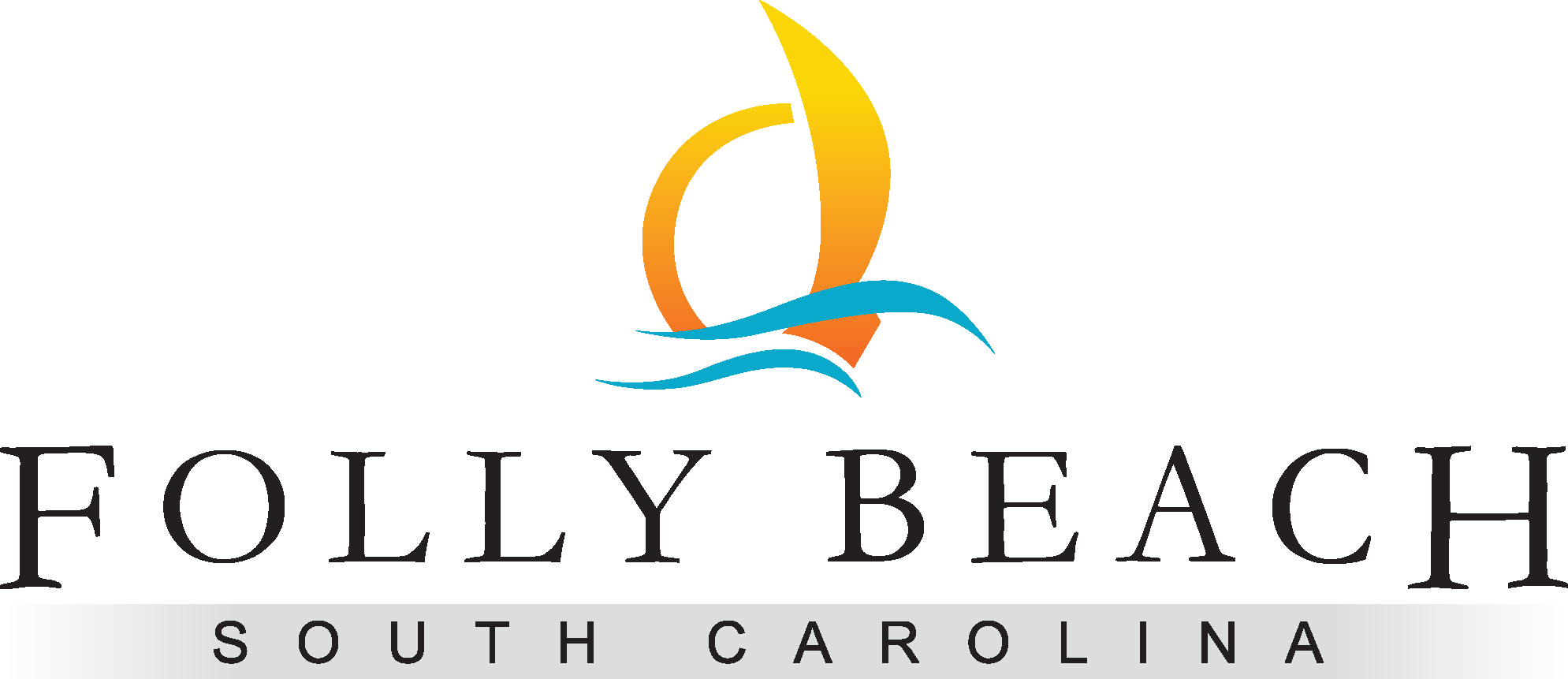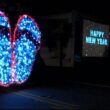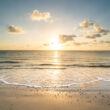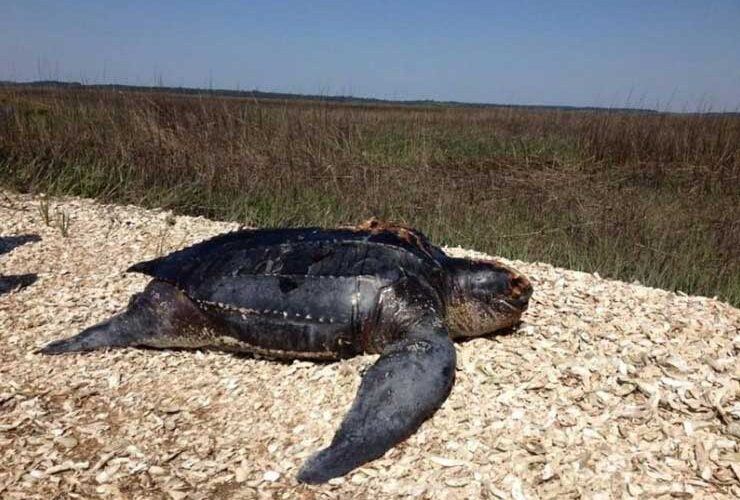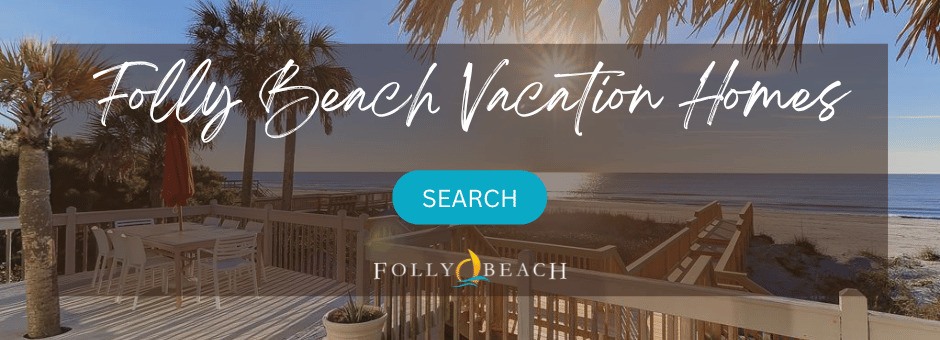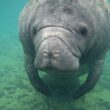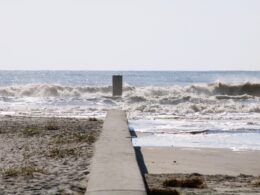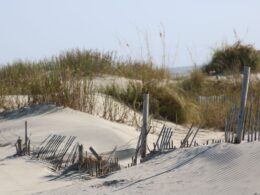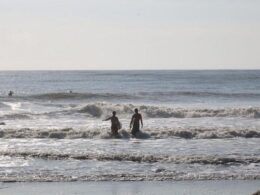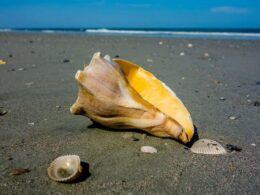It’s always a special experience in the Lowcountry to spot a sea turtle along the shoreline. Whether it’s a loggerhead nesting under moonlight or a leatherback cruising offshore, these ancient mariners are among the most beloved creatures to grace Folly Beach and South Carolina’s coastal waters.
Unfortunately, not every encounter tells a happy story. For many turtles, plastic pollution turns the ocean they call home into a dangerous maze of floating debris. And what looks like a jellyfish or a drifting patch of seaweed to a turtle is often something far deadlier — a plastic bag.
A Growing Problem Beneath the Waves
Plastic pollution is one of the greatest threats to marine life worldwide. According to research published in Science, nearly eight million metric tons of plastic enter the ocean each year — the equivalent of dumping a garbage truck full of plastic into the sea every minute.
Only a fraction of the plastic ever produced is recycled. The rest ends up in landfills, waterways, and eventually the ocean, where it never truly disappears. Instead, it breaks down into smaller pieces called microplastics, which are now found everywhere — from the seafloor to the stomachs of fish and seabirds.
For sea turtles, the danger is particularly acute. Many mistake floating bags, balloons, or fishing line for jellyfish or algae — their natural food sources. Once swallowed, the plastic can block their digestive systems, causing starvation or internal injuries.
Studies estimate that over half of all sea turtles worldwide have ingested plastic. Sadly, even a single piece can be fatal.
Folly Beach and South Carolina’s Sea Turtles
Each spring and summer, loggerhead sea turtles (South Carolina’s official state reptile) come ashore to nest along our beaches, including Folly. These visits are monitored by dedicated volunteers who track nests, protect hatchlings, and educate the public about responsible beach behavior.
It’s not uncommon to see volunteers early in the morning marking nests or checking for hatchling tracks. Their work is part of a larger coastal effort coordinated by the South Carolina Department of Natural Resources (SCDNR) to protect nesting turtles and reduce human impact.
You can read more about how to safely share the beach with nesting turtles in our guide to environmental etiquette at Folly Beach.
Plastic’s Hidden Dangers
The harm of plastic goes beyond ingestion. Floating debris can:
Entangle turtles and seabirds, restricting movement or causing injury.
Leach toxins such as PCBs and DDT into the water, which then enter the food chain.
Disrupt habitats, especially when debris washes into nesting areas or salt marshes.
Even small items like plastic straws or bottle caps can wreak havoc. Once they reach the ocean, they can travel thousands of miles on currents like the Gulf Stream, circling the globe and threatening wildlife far from where they were discarded.
Local Action: Folly Beach Leads the Way
Folly Beach has taken proactive steps to fight plastic waste and protect marine life. Local ordinances ban single-use plastic bags, Styrofoam containers, and straws, part of a growing movement toward sustainable coastal living.
These changes didn’t happen overnight. They were championed by residents, environmental groups, and small business owners who understood that keeping Folly clean isn’t just about aesthetics — it’s about survival for the wildlife that depend on it.
Visitors can do their part, too:
Bring reusable bottles and bags when visiting the island.
Properly dispose of all trash and recycling.
Avoid leaving gear or tents on the beach overnight — they can obstruct nesting turtles.
Check our tide chart before early-morning walks so you can spot fresh turtle tracks during nesting season.
Every small act contributes to a cleaner, safer coast.
The Bigger Picture: Why It Matters
Leatherbacks, loggerheads, greens, and Kemp’s ridleys have been swimming our oceans for more than 100 million years — long before humans ever set foot on these shores. Yet their survival now depends on our willingness to make better choices.
By reducing single-use plastics, supporting local sustainability initiatives, and sharing awareness, we can help ensure future generations get to witness these magnificent creatures in their natural habitat.
Because when a turtle glides past the Folly Beach Pier or surfaces offshore at sunrise, it’s not just a moment of wonder — it’s a reminder of what’s at stake and how much this coast still needs our care.
